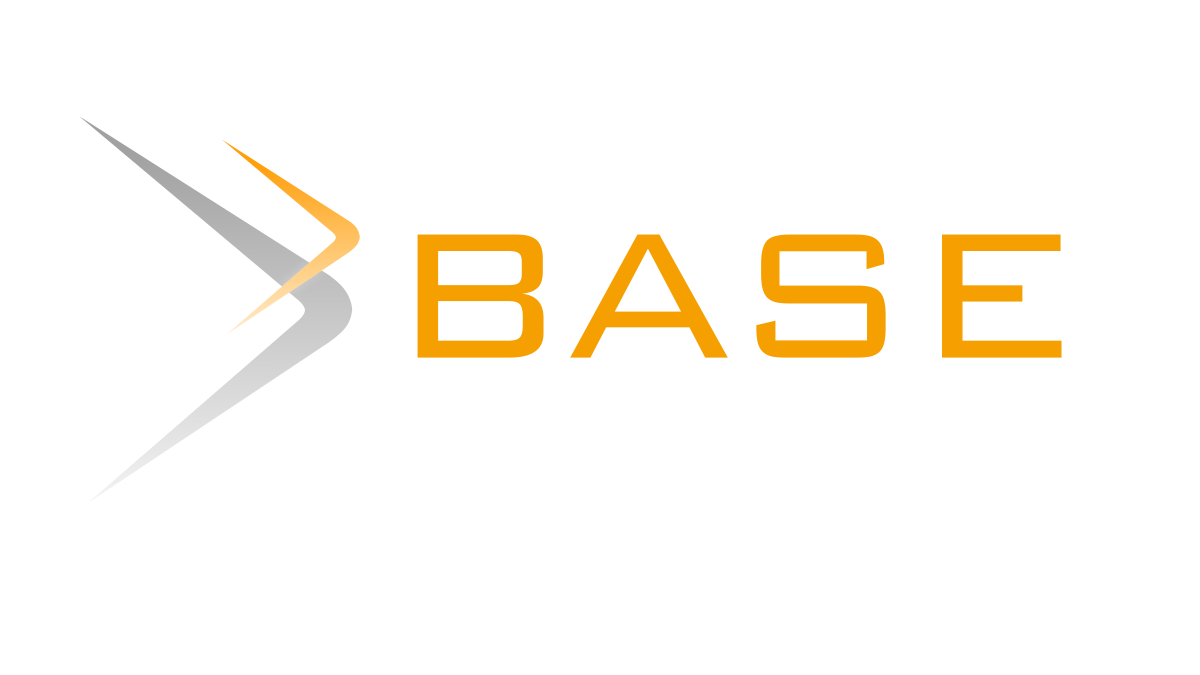The Impact of Utilitarian and Hedonic Values on Hijab Buying Intentions: Evidence from Indonesia
DOI:
https://doi.org/10.35313/jmi.v2i2.48Keywords:
Utilitarian Value, Hedonic Value, Buying IntentionAbstract
Hijab has become a necessity for Muslim female customers. Hijab products are various as it is not only used as a cover, but it also increases their confidence since hijab fashion does not have to be left behind by non-hijab fashion. The interest in buying a premium hijab may be due to its utilitarian or hedonic nature. This paper aims to examine the differences between the importance of utilitarian and hedonic values on evidence of buying intention of hijab from Indonesia. This research employs explanatory research by collecting 400 Muslim female respondents in West Java. The data processing method uses a scoring with a Likert scale from a score of one to five. The structural Equation Model (SEM) is used to analyze the data by applying SEM-PLS. The results show that both the utilitarian values and the hedonic values simultaneously do not affect the buying intention. Instead, they partially give a significant effect on the buying intention. This means that Muslim women in Indonesia are competing in seeking the values of their faith and need emotional satisfaction in their daily activities.
References
Akdim, K., Casaló, L. V, & Flavián, C. (2022). The role of utilitarian and hedonic aspects in the continuance intention to use social mobile apps. Journal of Retailing and Consumer Services, 66, 102888.
Anderson, K. C., Knight, D. K., Pookulangara, S., & Josiam, B. (2014). Influence of hedonic and utilitarian motivations on retailer loyalty and purchase intention: A facebook perspective. Journal of Retailing and Consumer Services, 21(5), 773–779. https://doi.org/10.1016/j.jretconser.2014.05.007
Andik, S. D. S., Daryanto, A., & Sembada, P. (2021). The consumer’s motivation towards online purchase intention of chicken meat during the Covid-19 pandemic. E3S Web of Conferences, 306.
Arikunto, S. (2007). Prosedur Penelitian Suatu Pendekatan Praktek (6th ed.). Rineka Apta.
Arnold, M. J., & Reynolds, K. E. (2003). Hedonic shopping motivations. Journal of Retailing, 79(2), 77–95. https://doi.org/10.1016/S0022-4359(03)00007-1
Arul Rajan, K. (2020). Influence of hedonic and utilitarian motivation on impulse and rational buying behavior in online shopping. Journal of Statistics and Management Systems, 23(2), 419–430.
Bäckström, K. (2011). “Shopping as leisure: An exploration of manifoldness and dynamics in consumers shopping experiences.” Journal of Retailing and Consumer Services, 18(3), 200–209. https://doi.org/10.1016/j.jretconser.2010.09.009
Bak?rta?, H., & Divano?lu, S. U. (2013). The effect of hedonic shopping motivation on consumer satisfaction and consumer loyalty. International Journal of Asian Social Science, 3(7), 1522–1534.
Blackwell, R., Miniard, P., & Engel, F. (2000). Consumer Behavior. South-Western College Publishing.
Blythe, J. (2005). Essentials of Marketing. Pearson Education Limited.
Childers, T. L., Carr, C. L., Peck, J., & Carson, S. (2001). Hedonic and utilitarian motivations for online retail shopping behavior. Journal of Retailing, 77(4), 511–535.
Chin, W. W., Peterson, R. A., & Brown, S. P. (2008). Structural equation modeling in marketing: Some practical reminders. Journal of Marketing Theory and Practice, 16(4), 287–298.
Cohen, J. (1988). Statistical Power Analysis for The Behavioural Sciences.
El-Bassiouny, N. M. (2016). The Hijabi self: authenticity and transformation in the Hijab fashion phenomenon Noha. Journal of Islamic Marketing, 1–16.
Ghozali, I. (2014). Model Persamaan Structural, Konsep dan Aplikasi Dengan program AMOS 22.0. (Structural Equation Model, Concept and Application with AMOS 22.0 program. UNDIP.
Ghozali, I., & Latan, H. (2015). Konsep, Teknik, Aplikasi Menggunakan Smart PLS 3.0 Untuk Penelitian Empiris. Badan Penerbit Universitas Diponegoro.
Hair, J. F., Hult, G. T. M., Ringle, C. M., & Sarstedt, M. (2017). A Primer on Partial Least Squares Structural Equation Modeling (PLS-SEM). Thousand Oaks. Sage, 165.
Hair, J. F., Black, W. C., Babin, B. J., & Anderson, R. E. (2010). Multivariate Data Analysis. In Vectors. https://doi.org/10.1016/j.ijpharm.2011.02.019
Hair, J. F., Bush, R., & Ortinau, D. (2006). Marketing Research Within a Changing Environment. Revised International Edition. McGraw-Hill.
Hair, J. F., Hult, G. T. M., Ringle, C. M., Sarstedt, M., & Thiele, K. O. (2017). Mirror, mirror on the wall: a comparative evaluation of composite-based structural equation modeling methods. Journal of the Academy of Marketing Science, 45(5), 616–632. https://doi.org/10.1007/s11747-017-0517-x
Hair, J. F., Sarstedt, M., Ringle, C. M., & Gudergan, S. P. (2017). Advanced issues in partial least squares structural equation modeling. Sage.
Hair Jr, J. F., Hult, G. T. M., Ringle, C., & Sarstedt, M. (2016). A primer on partial least squares structural equation modeling (PLS-SEM). Sage publications.
Hair Jr, Joe F, Sarstedt, M., Hopkins, L., & Kuppelwieser, V. G. (2014). Partial least squares structural equation modeling (PLS-SEM): An emerging tool in business research. European Business Review.
Hamzah, M. I., Hashim, N., Othman, A. K., & Ahmad, A. (2013). The relationship between hedonic and utilitarian customer experiences, repurchase intentions and preferences among shoppers. Social and Behavioral Sciences, 73(1), 1–7.
Haryanti, I., Nurdin, H., Purnama, I., Mulya, K. S., & Nurulrahmatiah, N. (2020). Hedonic Motives and Fashion Trends in Decisions to Purchase Veil Clothes. 1st Annual Conference on Education and Social Sciences (ACCESS 2019), 139–141.
Hassan, S. H., & Harun, H. (2016). Factors influencing fashion consciousness in hijab fashion consumption among hijabistas. Journal of Islamic Marketing.
Henseler, J., & Sarstedt, M. (2013). Goodness-of-fit indices for partial least squares path modeling. Computational Statistics, 28(2), 565–580. https://doi.org/10.1007/s00180-012-0317-1
Hien, N. N., Phuong, N. N., Tran, T. Van, & Thang, L. D. (2020). The effect of country-of-origin image on purchase intention: The mediating role of brand image and brand evaluation. Management Science Letters, 10, 1205–1212. https://doi.org/10.5267/j.msl.2019.11.038
Holbrook, M. B., & Hirschman, E. C. (1982). The Experiential Aspects of Consumption: Consumer Fantasies, Feelings, and Fun. Journal of Consumer Research, 9(2), 132. https://doi.org/10.1086/208906
Irani, N., & Hanzaee, K. H. (2011). The effects of variety-seeking buying tendency and price sensitivity on utilitarian and hedonic value in apparel shopping satisfaction. International Journal of Marketing Studies, 3(3), 89.
Jones, M. A., Reynolds, K. E., & Arnold, M. J. (2006). Hedonic and utilitarian shopping value: Investigating differential effects on retail outcomes. Journal of Business Research, 59(9), 974–981. https://doi.org/10.1016/j.jbusres.2006.03.006
Joseph F. Hair, J., Hult, G. T. M., M.Ringle, C., & Sarstedt, M. (2017). A Primer on Partial Least Squares Structural Equation Modeling (PLS-SEM). Thousand Oaks.
Kang, J., & Park-Poaps, H. (2010). Hedonic and utilitarian shopping motivations of fashion leadership. Journal of Fashion Marketing and Management, 14(2), 312–328. https://doi.org/10.1108/13612021011046138
Kharieza, J. (2018). Ketahui 5 Ciri-Ciri Hijab Premium Sebelum Membelinya di Sini! Bukareview.
Kotler & Armstong, P. & G. (2008). Principles of Marketing (12th ed.). Pearson Education. Inc.
Malhotra, N. K., Hall, J., Shaw, M., & Oppenheim, P. (2004). Essentials of marketing research: an applied orientation. Pearson Education Australia.
Malhotra, N. K., Henley, D. N., & David F. Birks. (2017). Marketing Research: An applied approach, 5th Edition (5th ed.). Pearson Education, Inc.
Niinimäki, K. (2010). Eco?clothing, consumer identity and ideology. Sustainable Development, 18(3), 150–162.
Overby, J. W., & Lee, E. J. (2006). The effects of utilitarian and hedonic online shopping value on consumer preference and intentions. Journal of Business Research, 59(10–11), 1160–1166. https://doi.org/10.1016/j.jbusres.2006.03.008
Ramkumar, B., & Woo, H. (2018). Modeling consumers’ intention to use fashion and beauty subscription-based online services (SOS). Fashion and Textiles, 5(1), 1–22.
Razzaq, Z., Razzaq, A., Yousaf, S., & Hong, Z. (2018). The impact of utilitarian and hedonistic shopping values on sustainable fashion consumption: The moderating role of religiosity. Global Business Review, 19(5), 1224–1239.
Sarstedt, M., Ringle, C., & Hair, J. (2017). Partial Least Squares Structural Equation Modeling. https://doi.org/10.1007/978-3-319-05542-8_15-1
Scarpi, D. (2006). Fashion stores between fun and usefulness. Journal of Fashion Marketing and Management: An International Journal, 10(1), 7–24. https://doi.org/10.1108/13612020610651097
Sojali, R., Iffani, R. R., Tulus, L., Noviyanti, D., Ermawanti, A., & Sitepu, R. B. R. (2021). PENGARUH TREND HIJAB TERHADAP MINAT BELI KAUM WANITA MUSLIMAH. Media Mahardhika, 19(3), 608–617.
Subagio, H. (2012). Pengaruh Atribut Supermarket Terhadap Motif Belanja Hedonik Motif Belanja Utilitarian Dan Loyalitas Konsumen. Jurnal Manajemen Pemasaran, 6(1). https://doi.org/10.9744/pemasaran.6.1.8-21
Sugiyono. (2013). Metode Penelitian Pendidikan (Pendekatan Kuantitatif, Kualitatif, dan R&D). Alfabeta.
Suhartanto, D. (2014). Riset Pemasaran.
Sumarliah, E., Usmanova, K., Mousa, K., & Indriya, I. (2021). E-commerce in the fashion business: the roles of the COVID-19 situational factors, hedonic and utilitarian motives on consumers’ intention to purchase online. International Journal of Fashion Design, Technology and Education, 1–11.
Suparno, C. (2020). Online purchase intention of cosmetics: S-O-R framework application. Journal of Islamic Marketing, 12(9), 1665–1681. https://doi.org/10.1108/JIMA-09-2019-0192
Svensson, G., Ferro, C., Høgevold, N., Padin, C., Varela, J. C. S., & Sarstedt, M. (2018). Framing the triple bottom line approach: Direct and mediation effects between economic, social and environmental elements. Journal of Cleaner Production, 197, 972–991.
Vara, D. (2020). Fenomena Hijab Premium di Pasar Virtual. Detiknews.
Wang, Y. (2020). The Roles of Hedonic Value and Fashion Consciousness in Female Shoes Purchase Context: Application of the Theory of Planned Behavior. International Journal of Marketing Studies, 12(2), 1–38.
Downloads
Published
How to Cite
Issue
Section
License
Copyright (c) 2022 Moh Farid Najib, Tia Fauziah, Tjetjep Djatnika, Dedy Saefulloh, Dewi Purnamasari

This work is licensed under a Creative Commons Attribution-ShareAlike 4.0 International License.


















